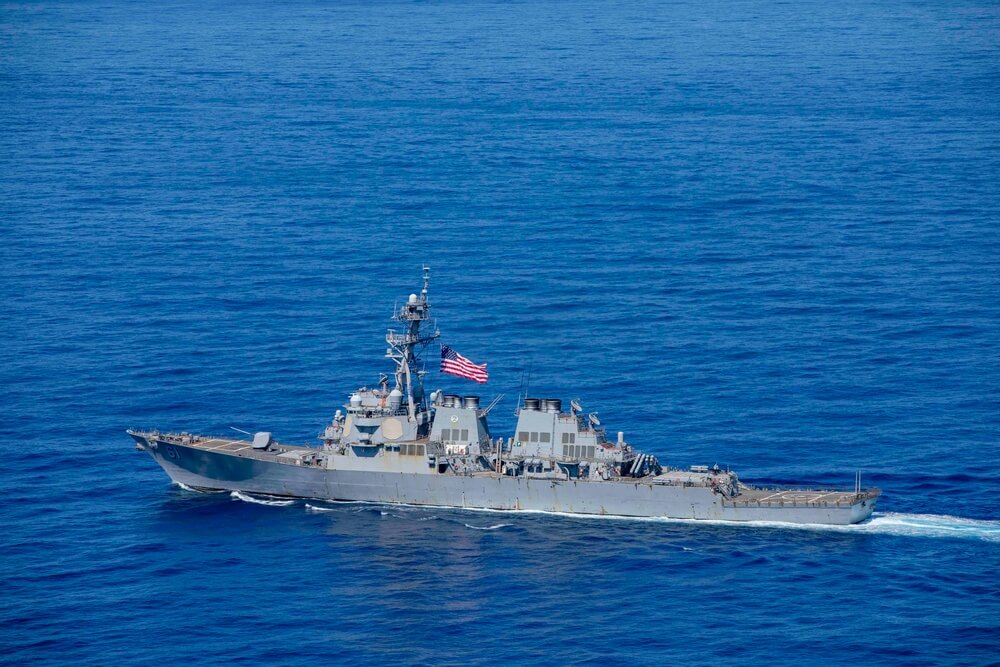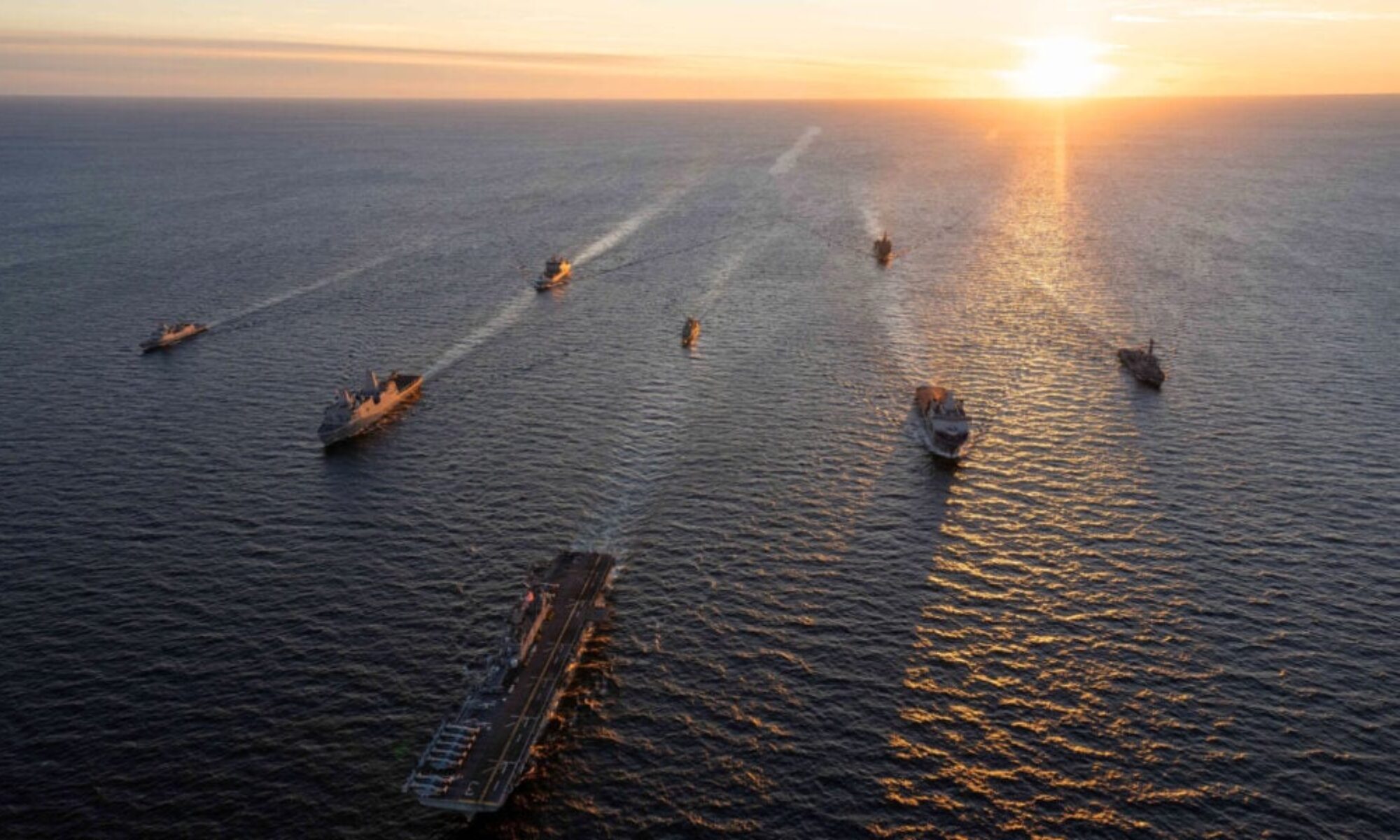
The United States of America is a maritime nation. Its security, prosperity, and leadership depend on its ability to project power and influence across the oceans. For more than two centuries, the U.S. Navy has been the guardian of the nation’s interests and values at sea, deterring aggression, ensuring freedom of navigation, providing humanitarian assistance, and supporting global stability.However, the U.S. Navy faces unprecedented challenges in the 21st century. The rise of China as a peer competitor, the resurgence of Russia as an adversary, the proliferation of rogue states and non-state actors, and the emergence of new domains such as cyberspace and space pose serious threats to the U.S. and its allies. These challenges require a stronger navy that can operate in all domains, across all regions, and against all adversaries.
In this article, we will examine why a stronger navy is vital for the U.S., how it can enhance its capabilities and readiness, and what it can achieve in cooperation with its NATO allies. We will draw on the latest facts and analysis from credible sources, such as naval experts, military officials, and academic scholars.
Why a Stronger Navy is Vital for the U.S.
For the United States, a stronger navy is not a “want” but a “need.” Historically, it has been extremely effective at advancing U.S. national interests. It is critical to deterring foreign adversaries and maintaining prosperity, not just for the U.S., but for all nations.
A stronger navy can deter potential enemies from attacking or coercing the U.S. or its allies. By maintaining a credible presence and demonstrating superior capabilities, the U.S. Navy can signal its resolve and commitment to defend its interests and uphold international norms. A stronger navy can also prevent conflicts from escalating by providing options for de-escalation and crisis management.
A stronger navy can also ensure the free flow of trade and commerce across the world’s oceans. The U.S. Navy protects the vital sea lanes that carry more than 90% of global trade, including energy resources, food supplies, and manufactured goods. A stronger navy can also foster economic growth and development by enabling access to new markets and opportunities.
A stronger navy can also support global peace and stability by participating in multilateral operations and engagements. The U.S. Navy contributes to humanitarian assistance and disaster relief missions, counterterrorism and counterproliferation efforts, maritime security and law enforcement activities, and capacity building and partnership initiatives. A stronger navy can also enhance interoperability and cooperation with allies and partners, especially NATO members.
How to Build a Stronger Navy
Building a stronger navy requires investing in modernization, innovation, and expansion. The U.S. Navy needs to acquire new platforms, systems, and technologies that can meet the current and future threats. It also needs to develop new concepts, doctrines, and strategies that can leverage its advantages and overcome its challenges. It also needs to grow its force structure, manpower, and readiness to sustain its presence and operations.
One of the key priorities for building a stronger navy is to increase its shipbuilding budget and accelerate its ship production rate. The U.S. Navy currently has 306 ships in its fleet, far below its peak of 594 in 1987 . The Department of Defense estimates that China has 355 ships in its fleet , many of which are increasingly capable and modern. The U.S. Navy aims to reach a fleet size of 355 ships by 2035 , but this goal faces significant fiscal and industrial constraints.
To achieve this goal, the U.S. Navy needs to invest more in shipbuilding programs that can deliver more ships faster, cheaper, and better. These programs include the Gerald R. Ford-class aircraft carriers , which are the most advanced aircraft carriers in the world; the Arleigh Burke-class guided missile destroyers , which are the backbone of the surface fleet; the Virginia-class attack submarines , which are the stealthiest submarines in the world; and the Constellation-class frigates , which are the newest addition to the fleet.
Another priority for building a stronger navy is to embrace new technologies that can enhance its capabilities and effectiveness. These technologies include artificial intelligence , which can improve decision making and automation; hypersonic weapons , which can travel faster than five times the speed of sound; unmanned systems , which can operate autonomously or remotely; cyberwarfare , which can disrupt or defend networked systems; and space systems , which can provide communication, navigation, surveillance, and targeting support.
To leverage these technologies, the U.S. Navy needs to foster a culture of innovation and experimentation that can generate new ideas and solutions. It also needs to collaborate with the private sector, the academic community, and the international partners that can provide expertise and resources. It also needs to update its acquisition and procurement processes that can facilitate rapid and agile development and deployment.
What a Stronger Navy Can Achieve with NATO Allies
Building a stronger navy is not only a national endeavor, but also a collective one. The U.S. Navy cannot achieve its objectives alone, but only in cooperation with its NATO allies. Together, they can form a formidable force that can deter, defend, and defeat any adversary.
The U.S. Navy and its NATO allies share common interests and values in the maritime domain. They both seek to ensure the security and stability of the Atlantic Ocean, the Mediterranean Sea, the Baltic Sea, and the Black Sea. They both face similar threats from Russia, China, Iran, North Korea, and terrorist groups. They both benefit from the free and open access to the global commons.
The U.S. Navy and its NATO allies also have a long history of cooperation and coordination in the maritime domain. They have established various mechanisms and frameworks that facilitate their interoperability and integration. These include the Standing NATO Maritime Groups , which are multinational naval forces that conduct routine patrols and exercises; the NATO Maritime Command , which is the operational headquarters that oversees all maritime activities; and the NATO Maritime Strategy , which is the guiding document that outlines the vision and objectives for the maritime domain.
The U.S. Navy and its NATO allies also conduct regular exercises and operations that enhance their readiness and effectiveness. One such exercise is Sage Wolverine , a series of high-end maritime training events that involve forces from SNMG 2 and the GRFCSG . The exercise, which began on July 31 and will end on August 15, 2023, aims to increase NATO interoperability and promote regional peace and stability .
One of the highlights of Sage Wolverine was a photo exercise that took place on August 7 in the Ionian Sea. The photo exercise featured the Greek navy frigate HS Elli (F 450), the Italian navy Todaro-class submarine ITS Scirè (S 527), and the USS Ramage (DDG 61) in formation with the Gerald R. Ford in the background . The photo exercise demonstrated the close cooperation and coordination among the participating forces .
Conclusion
The United States of America needs a stronger navy now more than ever. A stronger navy is vital for deterring foreign adversaries, ensuring freedom of navigation, providing humanitarian assistance, and supporting global stability. A stronger navy can be built by investing in modernization, innovation, and expansion. A stronger navy can achieve more by working with its NATO allies.
The Americans for a Stronger Navy is a non-profit organization that advocates for increasing the naval power of the U.S. We believe that a stronger navy is essential for protecting our nation, advancing our interests, and promoting our values. We urge our fellow citizens, our elected representatives, and our military leaders to support our cause and join our efforts.
If you want to learn more about our organization, our mission, and our activities, please visit our website at https://strongernavy.org/. Thank you for your attention and interest.

